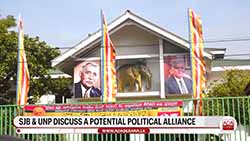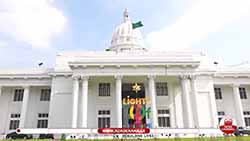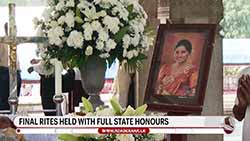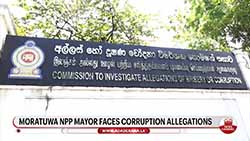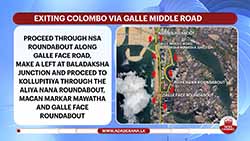Jaffna University Conflict: Non-Fictional Clash of Clans?
July 27, 2016 02:43 pm
The violent argument that occurred in the University of Jaffna earlier this month has possibly left considerable doubt in the minds of Lankans: Are we falling prey to racism? Is peace an intricate luxury that we seemingly cannot afford?
Rewind…


Racial conflict is no stranger to us, Lankans. The raging civil war with the LTTE in our nation lasted for a good three decades and ended a mere 7 years ago. Among the speculated reasons behind the origin of this bloody affair, it has been assumed that the passing of the “Sinhala Only Act” in 1956 also played a part in the instigation of the 30 year conflict. The 1958 riots were deemed to be the first nation-wide cultural riots following Sri Lanka’s independence from Britain.
The Riots of 1983, dubbed “Black July”, left a permanent scar on Ceylon as the country witnessed the brutal treatment, targeting and setting ablaze of Tamils, their homes as well as their places of business and employment. The uprising lasted between July 24 and July 30 in the mentioned year and citizens who witnessed these attacks still shudder at the thought.
This period of time is thought to be the supposed dawn of the deadly civil war.
Five years after the long-awaited end of the war, Sri Lanka was not done seeing its fair share of conjectural racialism. This time, in 2014, the clash was observed to be between Buddhists and Muslims in, primarily, the locale of Aluthgama, Dharga Town and Beruwala. Curfews were set, homes and shops were lit on fire and many were injured. As a result, an extremely large number of Muslims and Sinhalese nationals were said to be temporarily displaced.
The Prevailing Plight

July 16, 2016- Half a dozen students from the University of Jaffna were hospitalized after an argument turned foul between two groups in the education facility. The row had allegedly taken place during a ceremony organized to greet new students to the university’s science faculty. As per Lankan cultural tradition, occasions are habitually graced by the presence of performing dancers.
While one group of students suggested that a Kandyan dance be performed, the other group counteracted the proposal by requesting the performance of Tamil traditional dance. Nonetheless, the event saw the performance of the Kandyan dance, ergo, leading to the escalation of the disagreement. Video footage of the brawl was not easy on the eyes. Enormous poles were sighted in the hands of some of the people present and the beating was atrocious. Subsequently, the university was closed down.
How the Debacle was Countered

Days later the Tamil National Alliance (TNA) announced their regret about the injured and over the fact that Sinhala students had to be evacuated from the university and Jaffna as a safety measure. Additionally, they encouraged harmonization so that students from different backgrounds could live and study together in the University.
Vice Chancellor at the University of Jaffna, Prof. Vasanthy Arasaratnam, declared that a three-member committee was appointed with the intention of looking into the student clash at the facility. She also added that the university was at peace and that the students have guaranteed that such conflicts would not recur. However, we mustn’t ignore the disturbances caused in the past due to the disarray of ragging at universities in Lanka. Many of us would remember that this resulted in drastic outbursts and ragging never really seems to come to a halt, regardless of the number of attempts made by the state.
Furthermore, a request was made that the government set up a “full-fledged” Commission of Inquiry to carry out a detailed probe into the violent behavior. The call for this investigation was made by Chief Minister C. V. Vigneswaran and Leader of Opposition in the Northern Provincial Council, S. Thavarajah.
The letter they wrote included that the incident should not be looked at from a sole criminal law point of view. They urged that the reasons for this hostility should be comprehended and thusly, determine methods to deal with the situation in order to prevent it from happening a second time.
More Than a Dance?


As established, the reason behind the argument was due to the fact that the Kandyan dance was performed rather than the Tamil traditional dance. However, why brawl so brutally over a dance? What if there is more to the debacle than just a performance?
Vigneswaran and Thavarajah shared an opinion that aggravations have been stirring among the Tamil nationals, both students and non-students, over particular changes taking place in the Northern Province.
In the letter that the two politicians compiled the following statements made an appearance:
- “Merely condemning such incidents or punishing certain students after an inquiry would not be able to bring about understanding and unity.”
- “In the past, when the legitimate demands of the Tamil People were disregarded and they, in turn, ventured to claim justice for their demands peacefully and by non violent means, their actions were identified as criminal activities and such identification led to youngsters taking up to arms.
- A Commission in consonance with the recent violence should consider the following actions in contemplation of determining whether such activities fueled the behavior of the students:
- The independent ‘War Crimes’ inquiry being dragged on indefinitely.
- Students from other provinces are being admitted in large numbers into Jaffna University.
- Such entrants are “bent on forcing” their arts and cultural background on Jaffna soil.
- There is reluctance and delay on the part of the powers in delivering political solutions that would allow the Tamils to look after their political affairs in their areas of historical habitation.
- There is a “tendency to retain in the province, the military far in excess its needs (seven years after the war)”.
In addition to the jointly written letter, other protests from the Northern Province have been echoing as well. Earlier this month, it was reported that a group of Sinhalese fishermen had threatened Tamil fishermen and the latter had stated that they face restrictions on where they are allowed to fish.
On July 23, 2016, unemployed Tamil graduates in the province staged a protest, claiming that there is a lack in government jobs available for them.
Furthermore, in an interview with The Huffington Post, a co-spokesperson at the Tamil Civil Society Forum declared that militarization in the North East is at its peak. Additionally, he went on to say that there is “discrimination and injustice against Tamils in Sri Lanka”.
What do our Politicians have to say?


Nishantha Warnasinghe, JHU National Organizer, condemned the conflict and claimed that the argument had stirred up separatism and racism in the nation, yet again.
Speaking at a press conference on July 21, 2016, PHU leader Udaya Gammanpila declared that while Kelaniya University students who were jailed, still remain behind bars, a student involved in the Jaffna Uni. Clash has already been granted bail. He questioned whether the laws we abide by here were any different to the rules in the North.
Minister Champika Ranawaka had also had a handful of opinions to contribute to the situation at hand. Like Gammanpila, Minister Ranawaka also played the “Kelaniya University Ragging” card and questioned why the attackers of the Sinhalese students were not paying the consequences of their actions. He further went on to say that although there are Tamil students in other universities in Sri Lanka, no one has hindered them.
“This is not just a conflict between students. There is deeper ingrained racism in this matter,” said Minister Ranawaka. In addition, he stated that these are the “great Prabhakarans” who would thrive in the future.
Remarks were also made by Minister Lakshman Kiriella. However, his comment that students fight everywhere and not just in Jaffna seems to be somewhat neutral.
Winding Up….

Brawls among university students are not uncommon, not only in our motherland, but around the globe. Nonetheless, one must wonder whether the racist and ethnic-conflict based spotlight that these clashes are being put under, is a step too far. What if it is just what it is; a distasteful situation among the students which happened in the spur of the moment?
Moreover, there is still an uncertain hint in the air about who initiated the argument and whether at all it was between faculties of Sinhalese and Tamil students. Ergo, it would be inadvisable to jump to wild conclusions.
On the other hand, it has also been argued that this clash of clans should not be ignored as these could be the instances that can fuel long-standing hatred among cultures.
In conclusion, it would be safe to say that the situation should be handled not as loudly and non-existent, baffling problems should not be conjured when they are not required.







